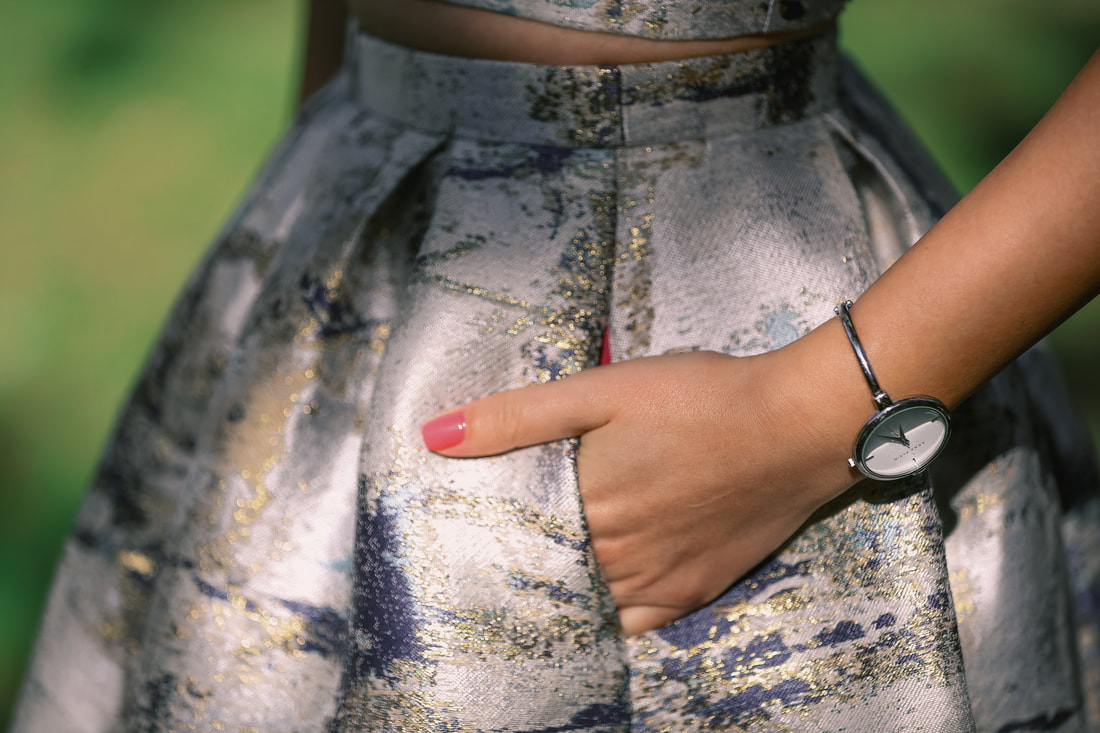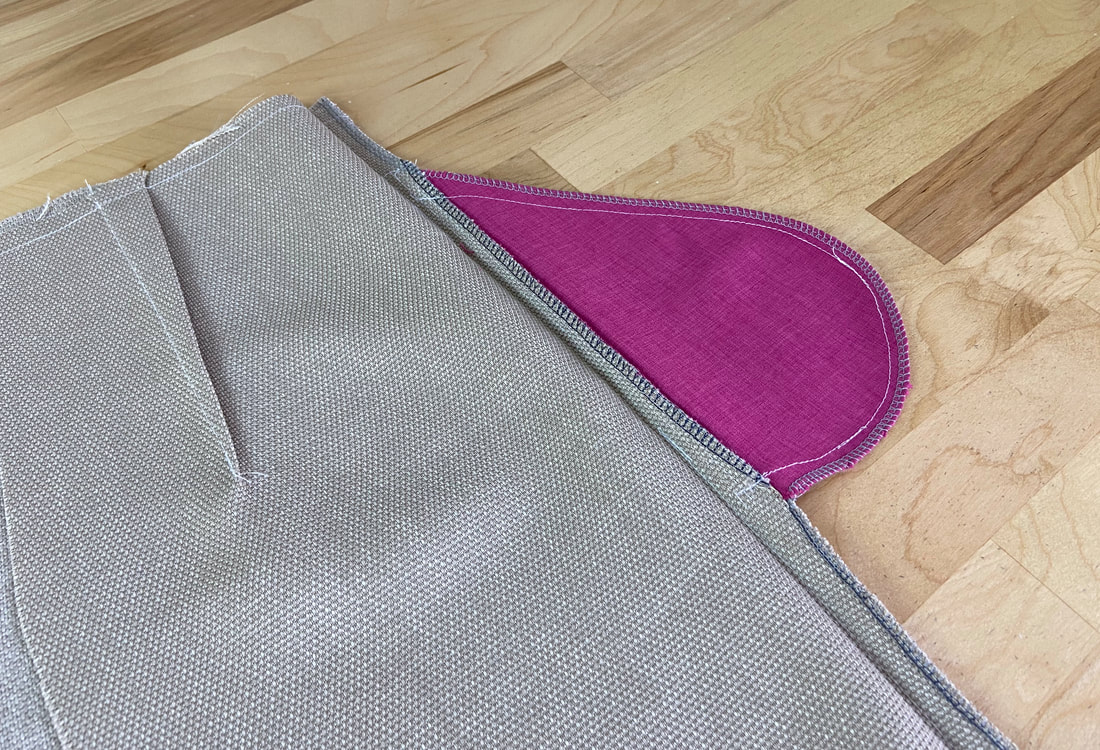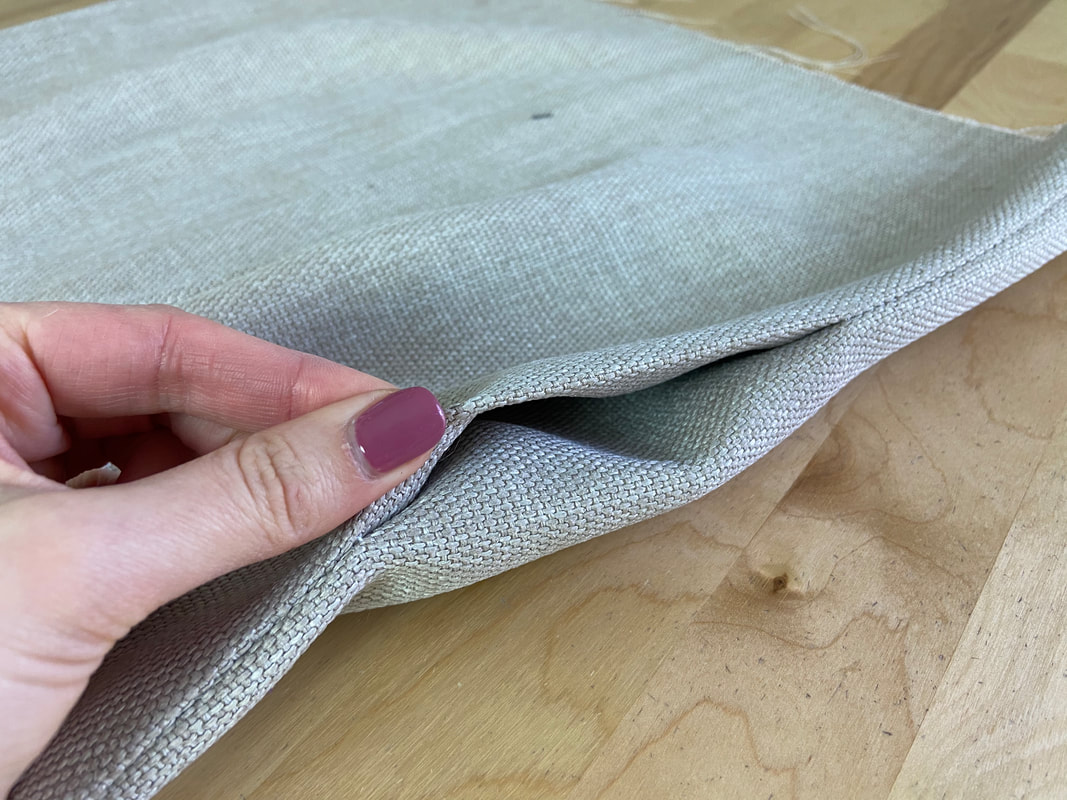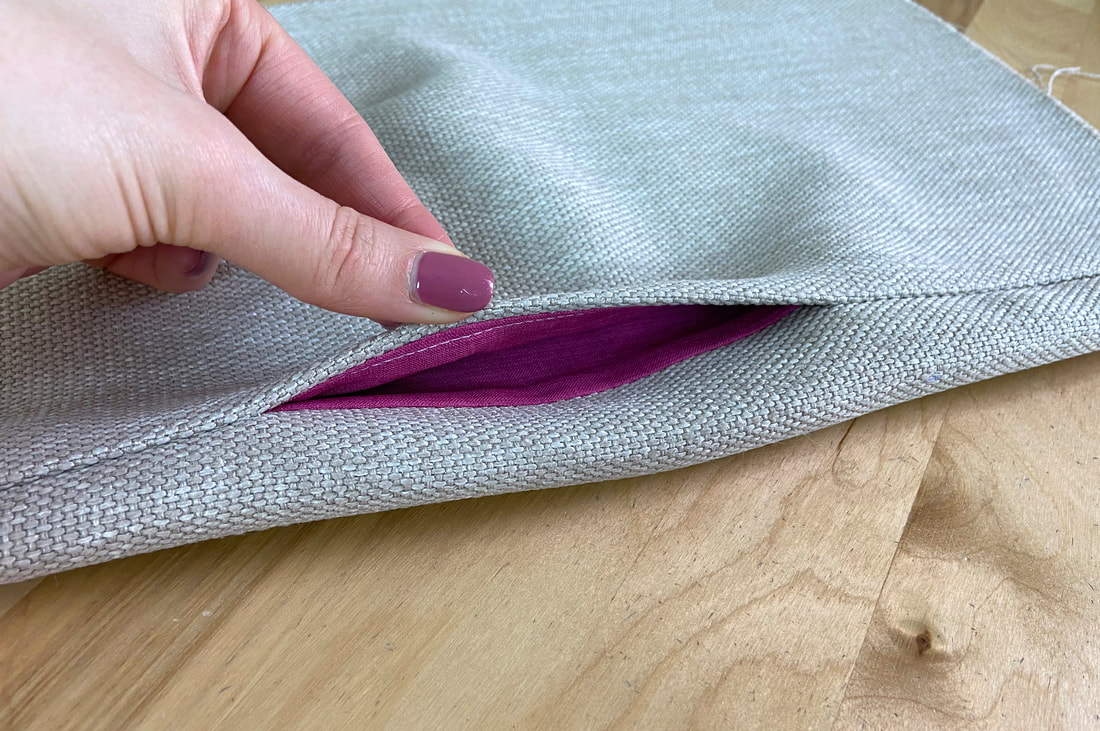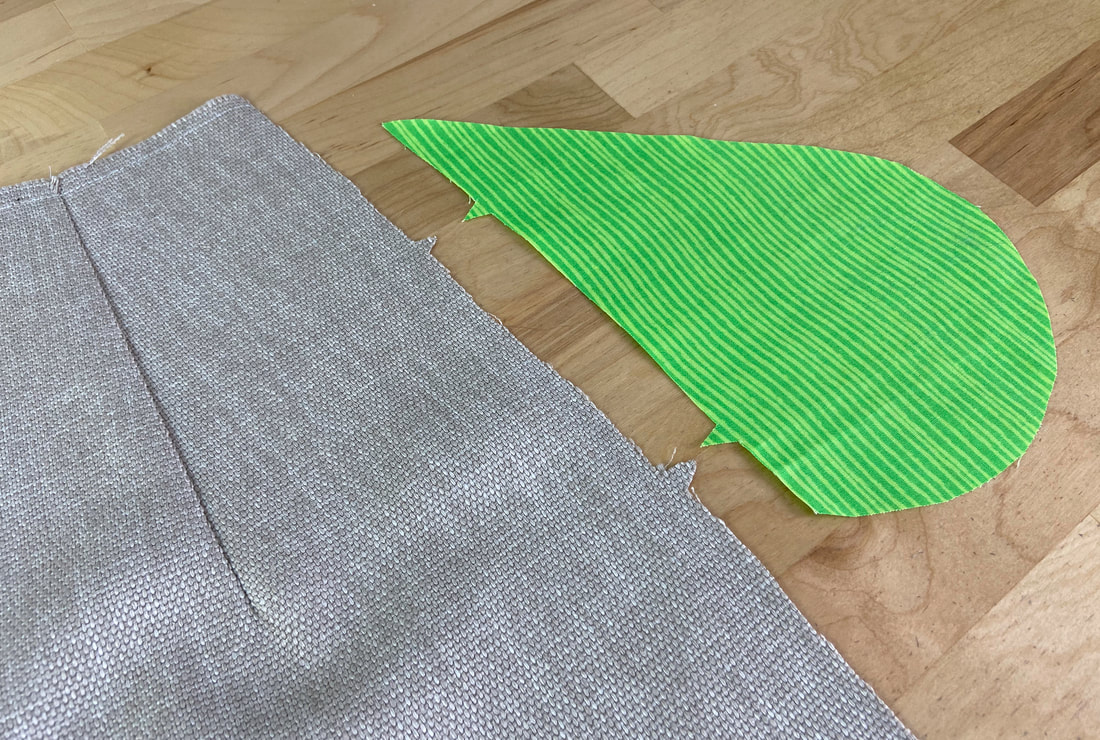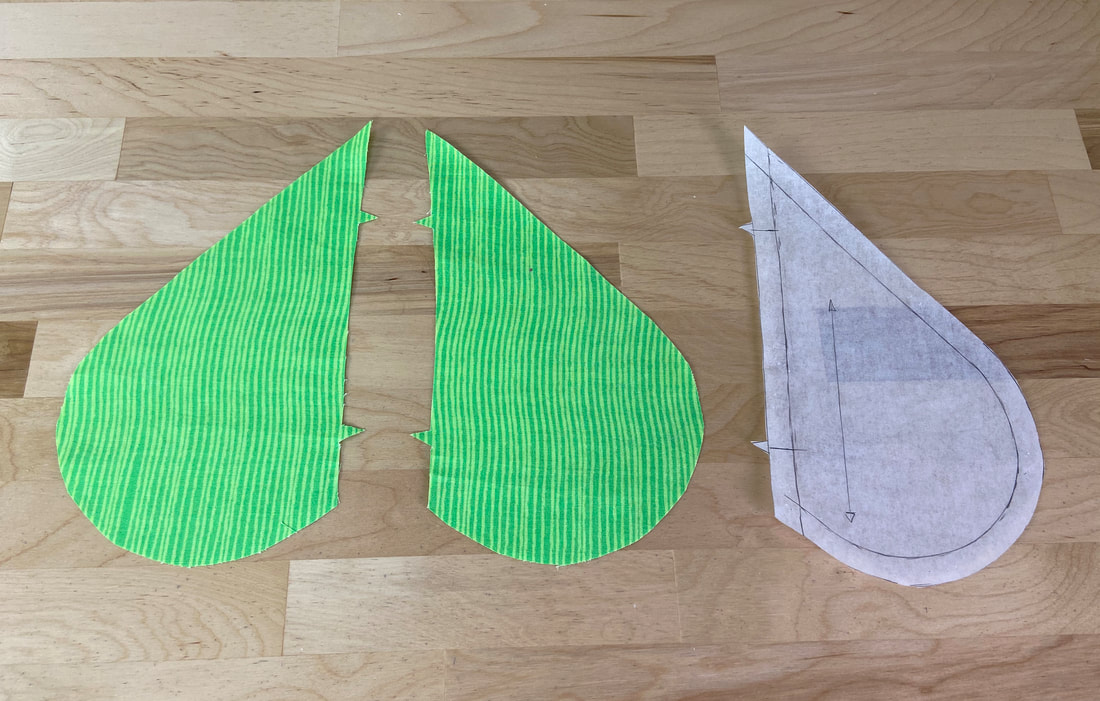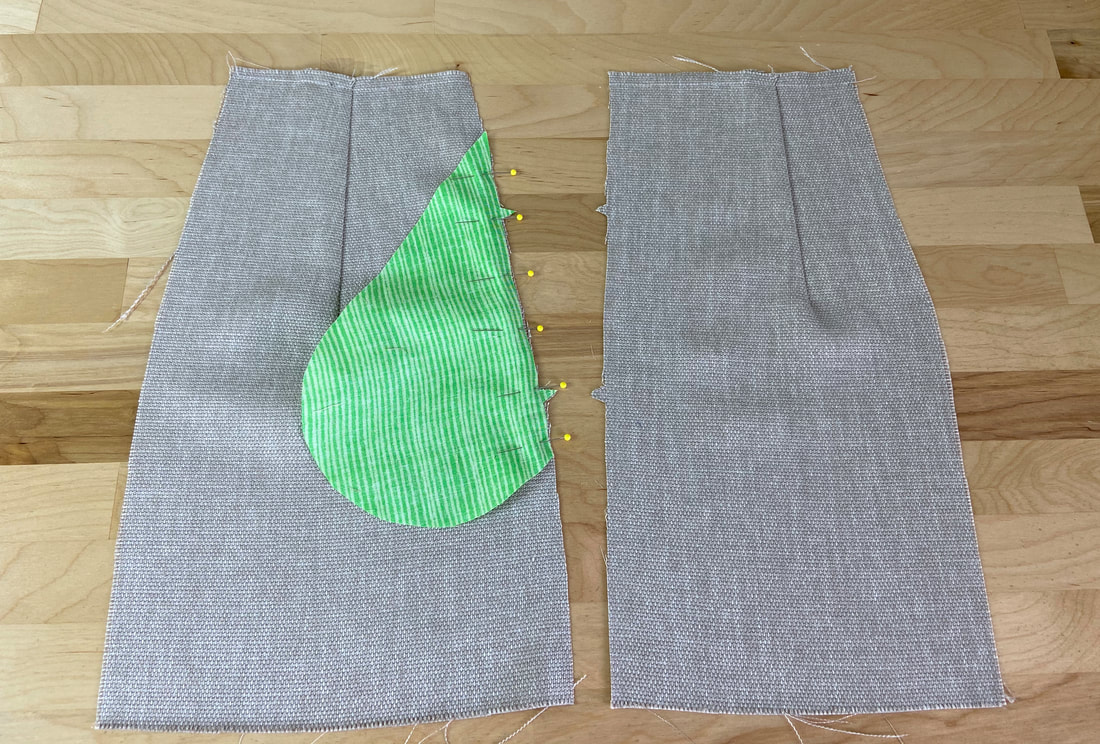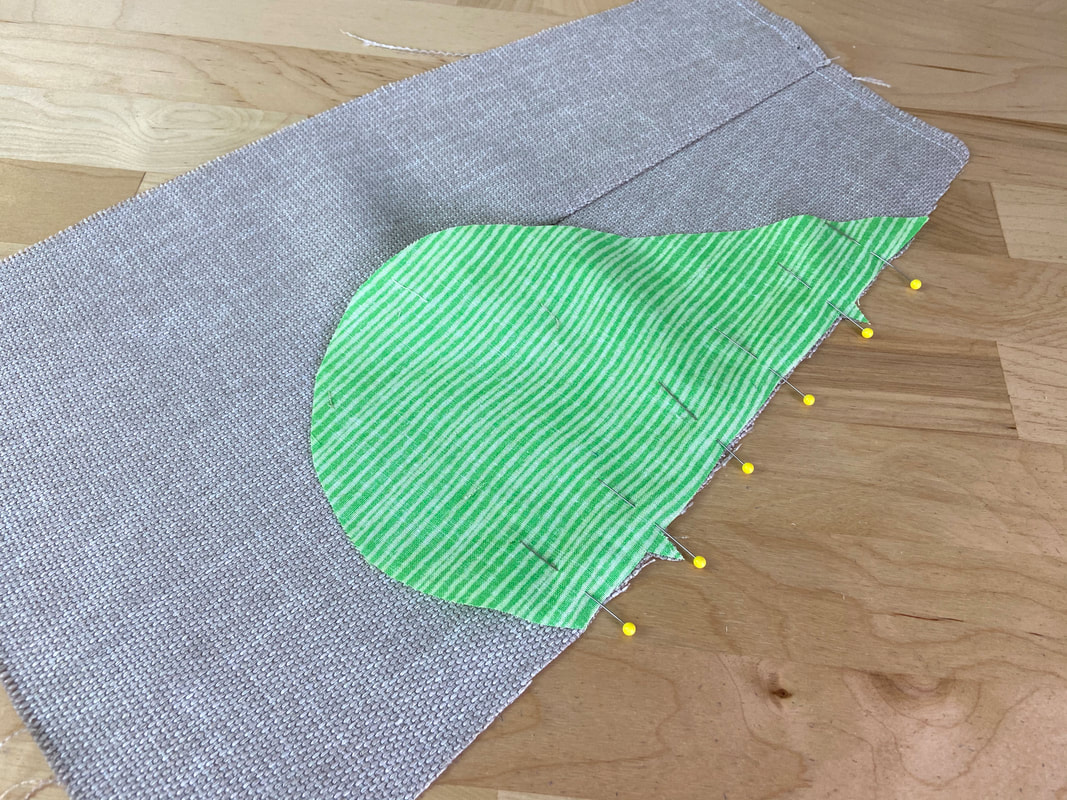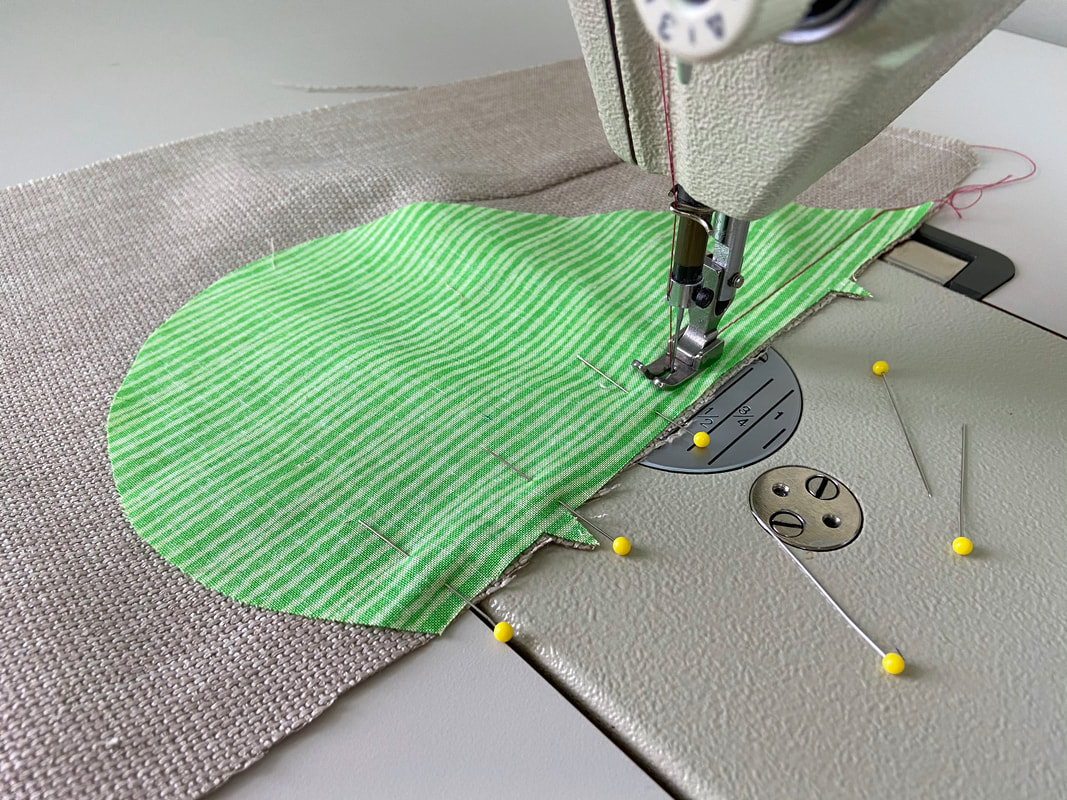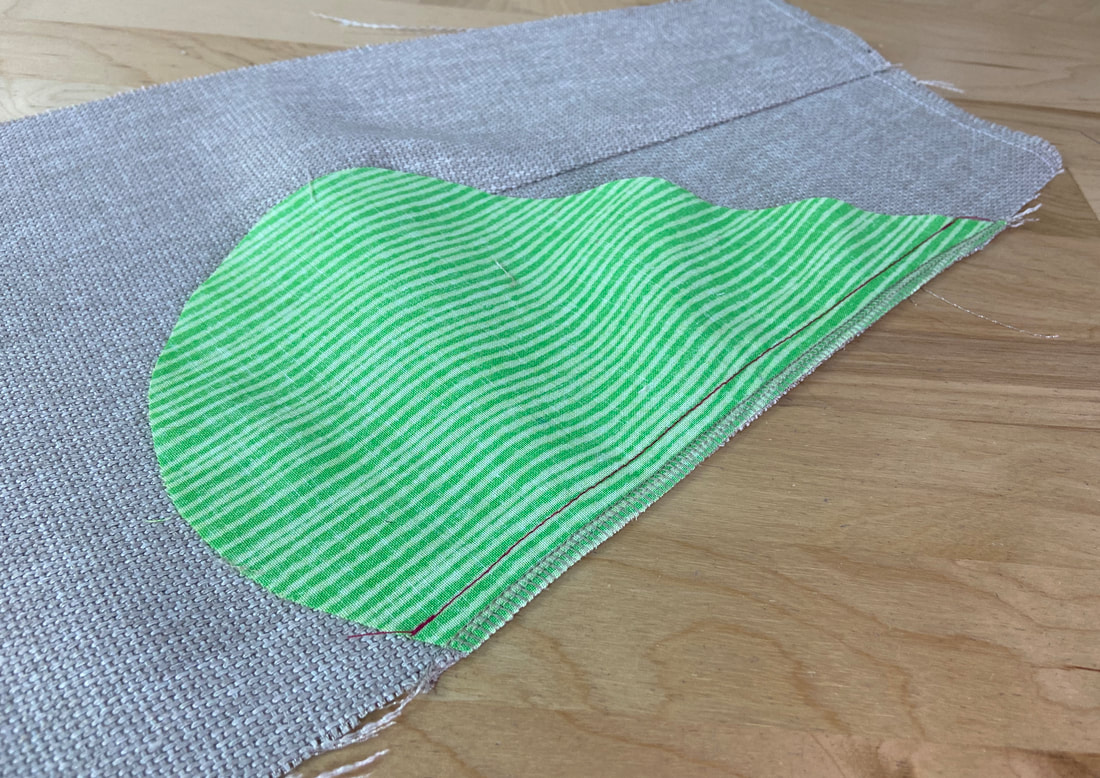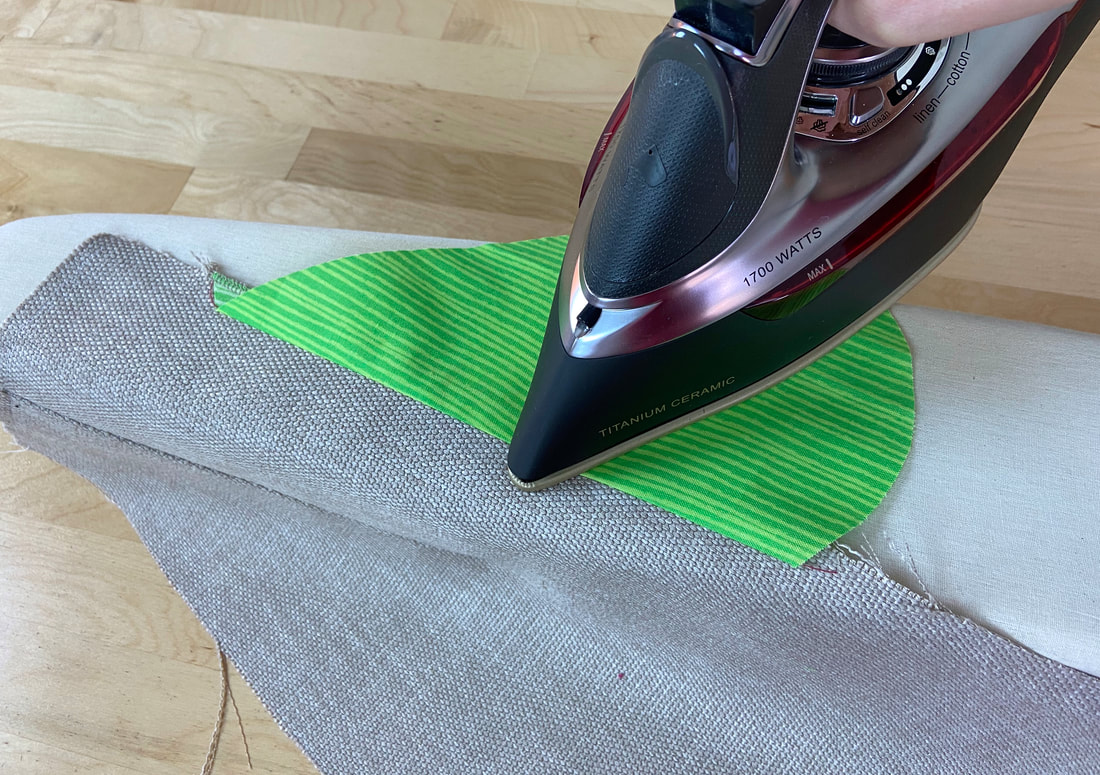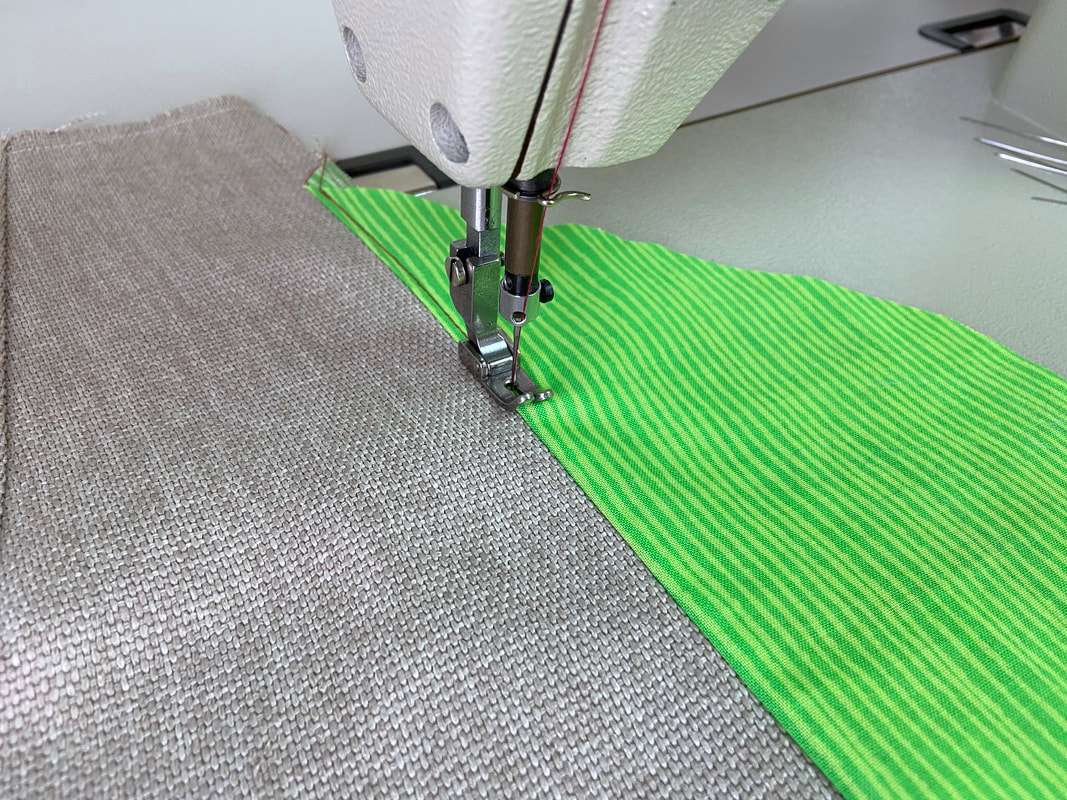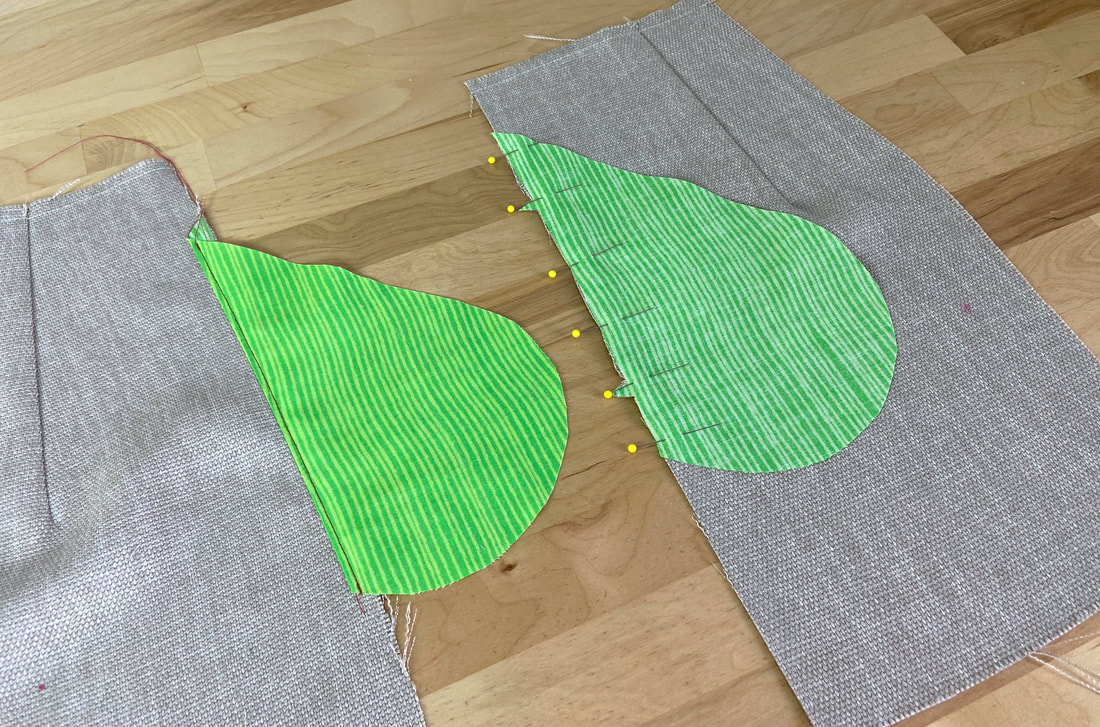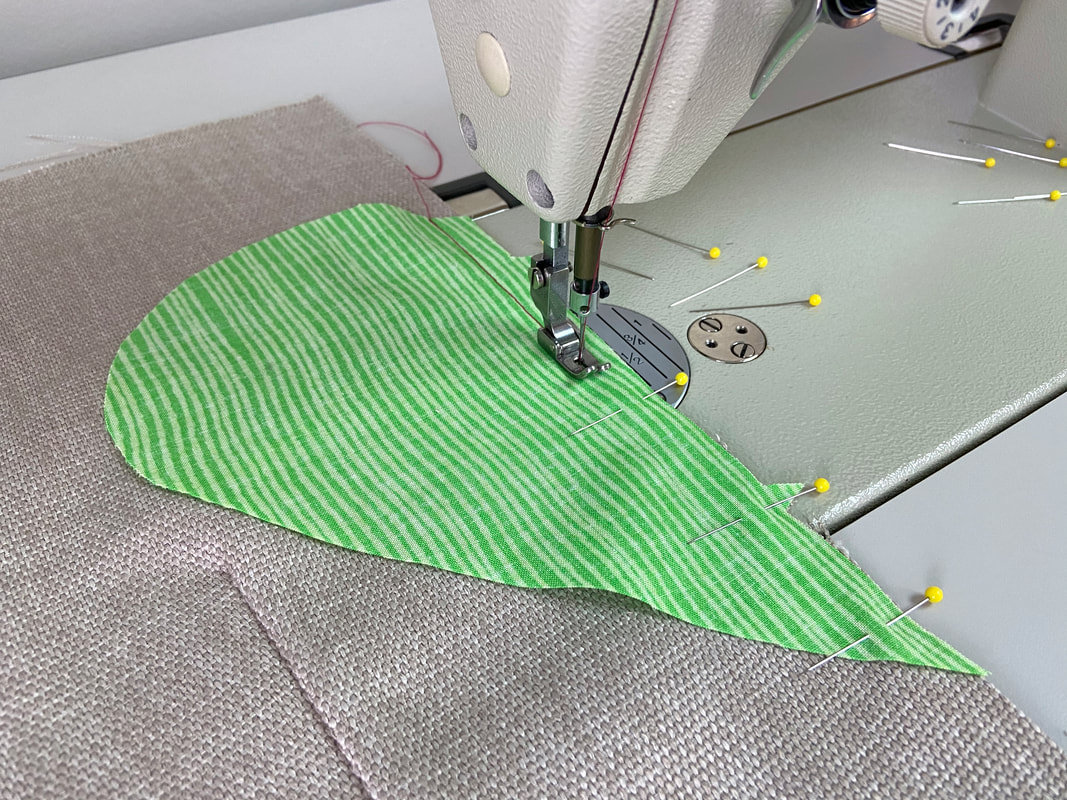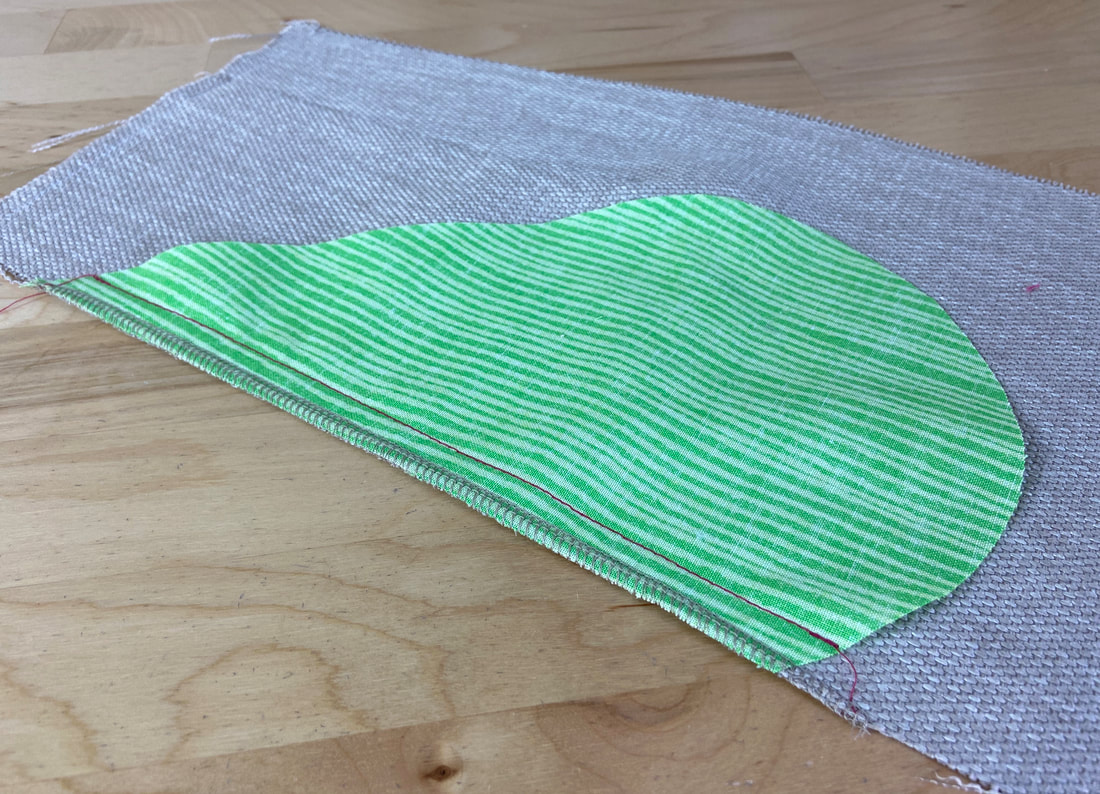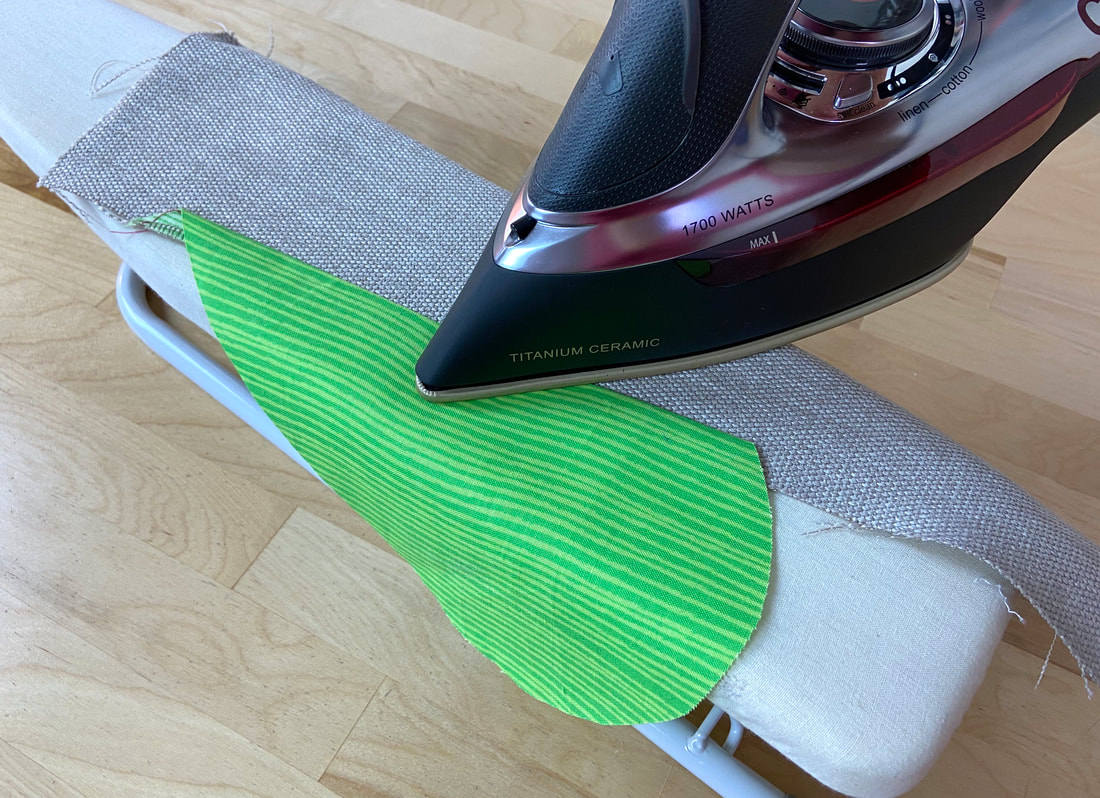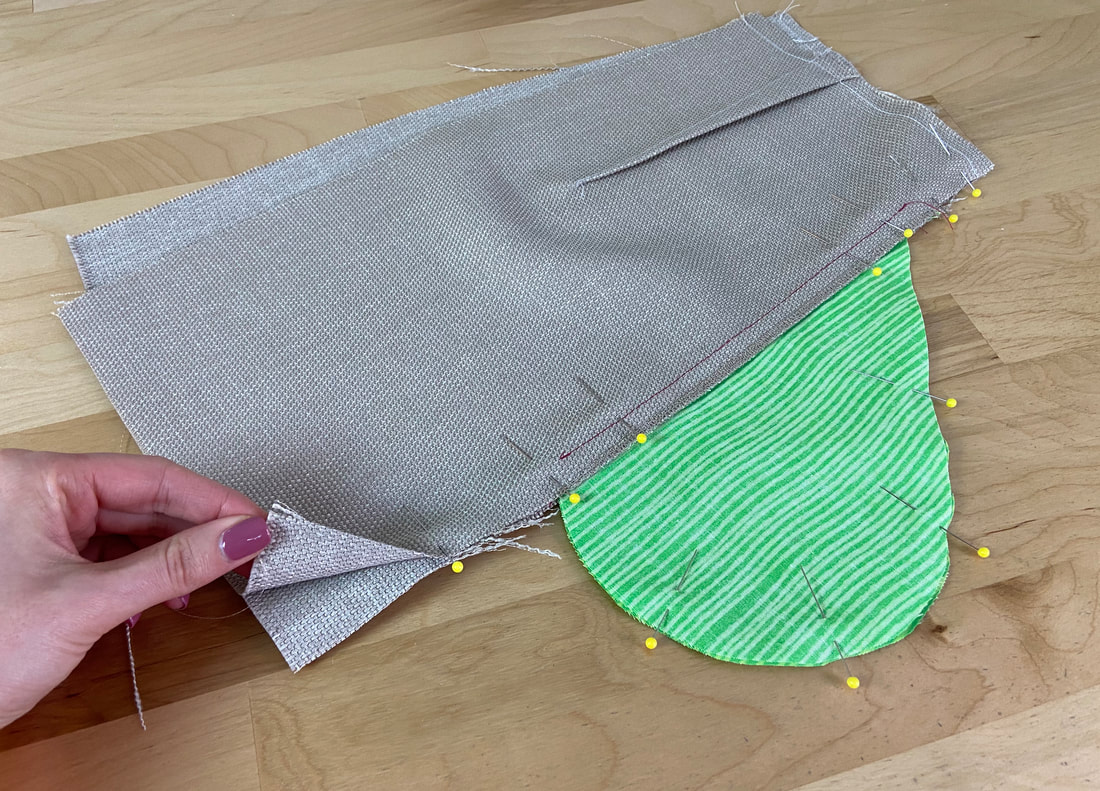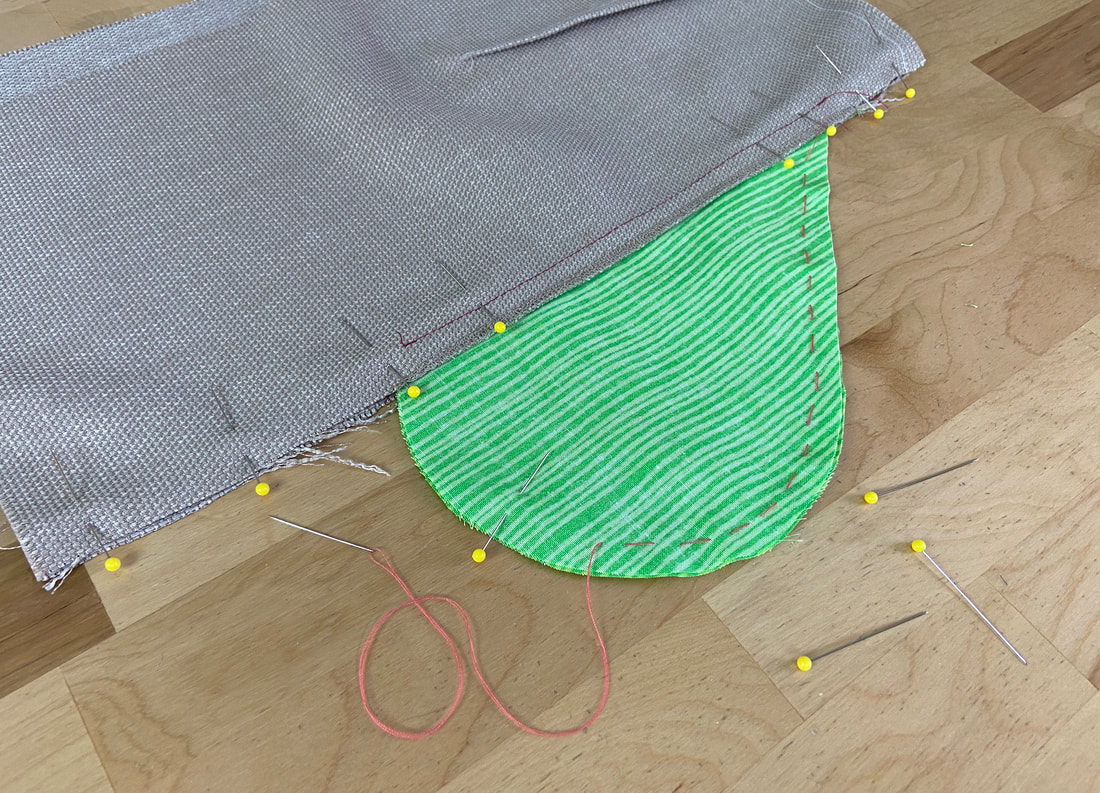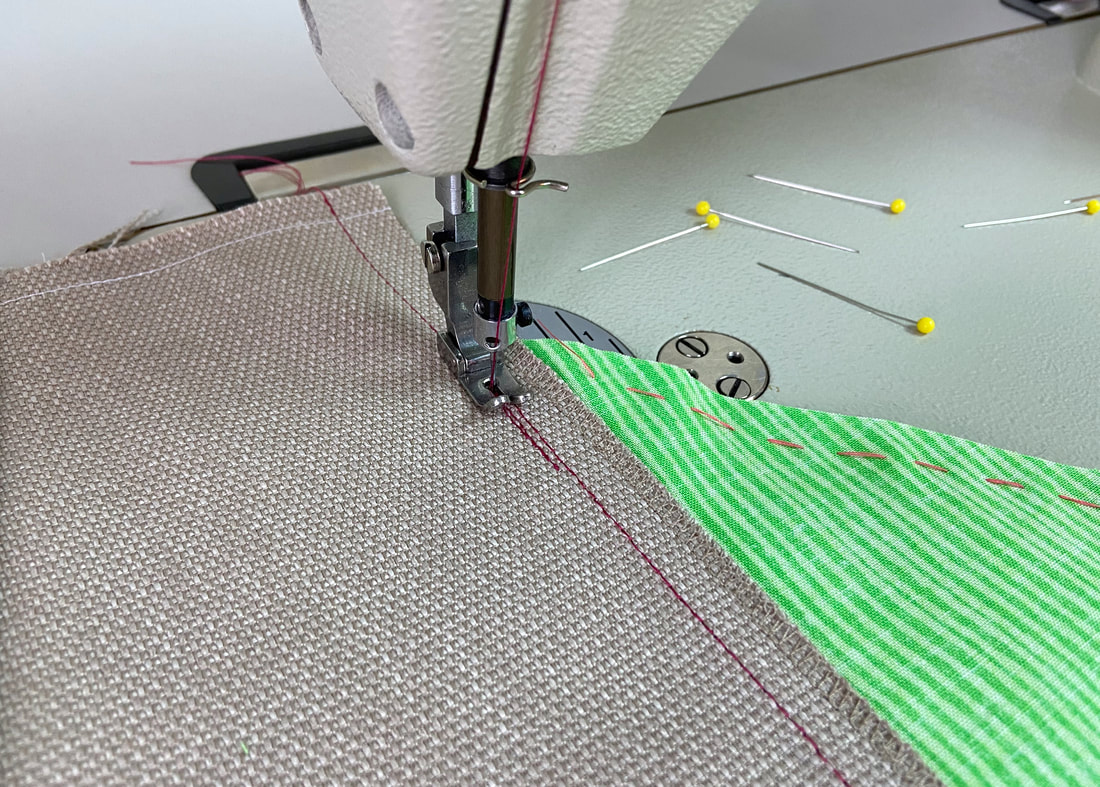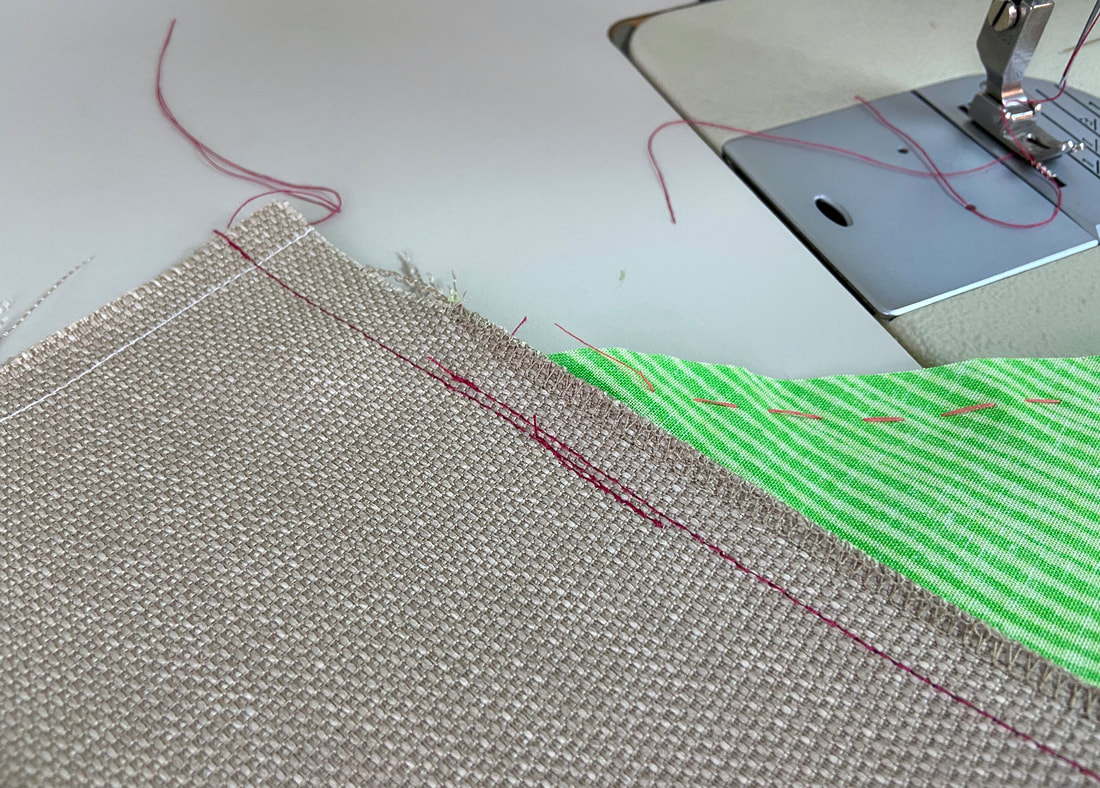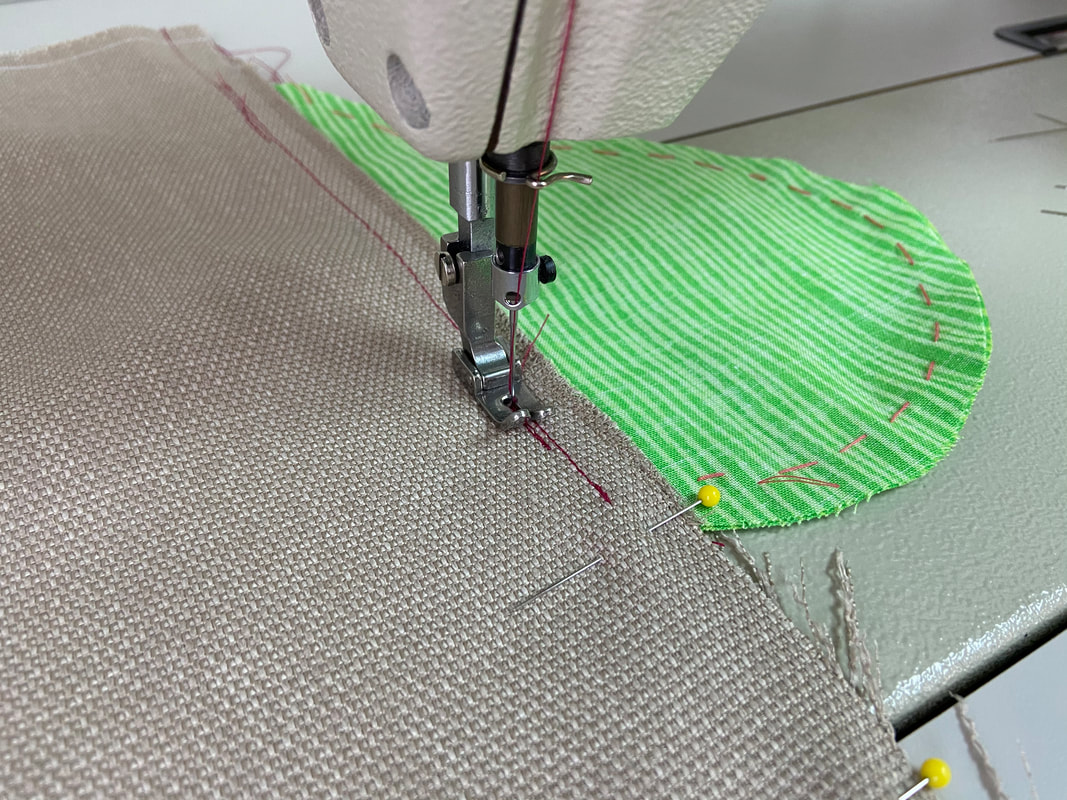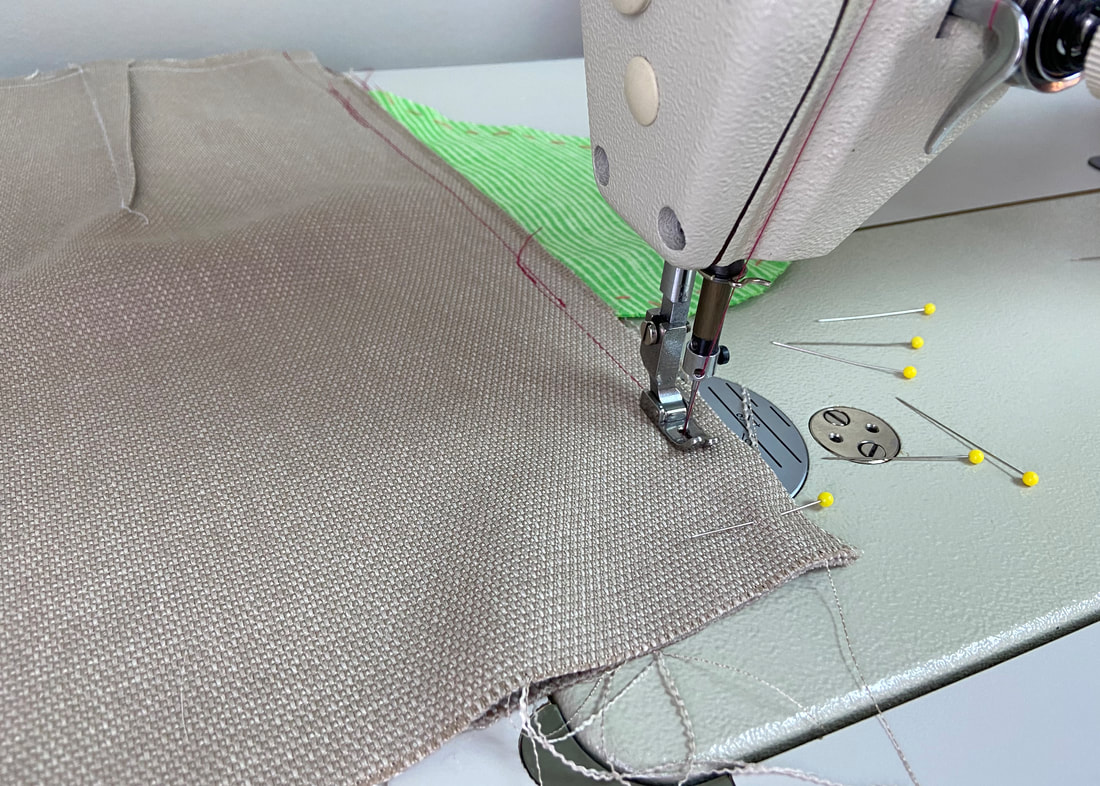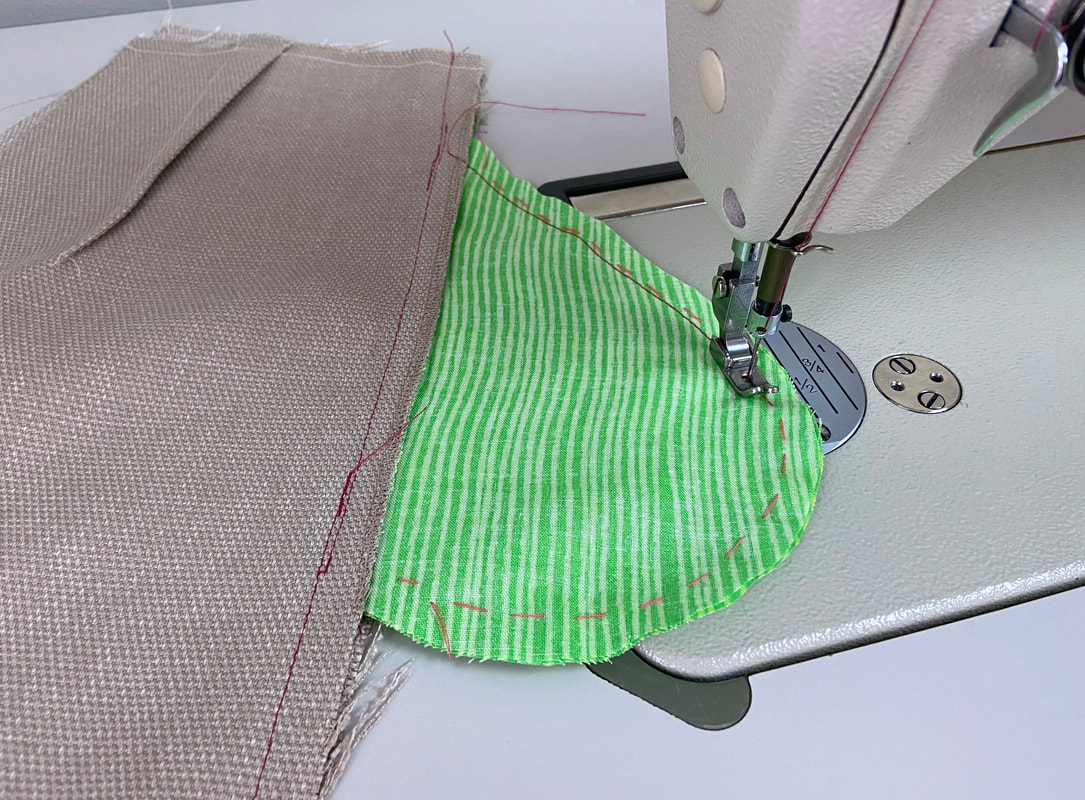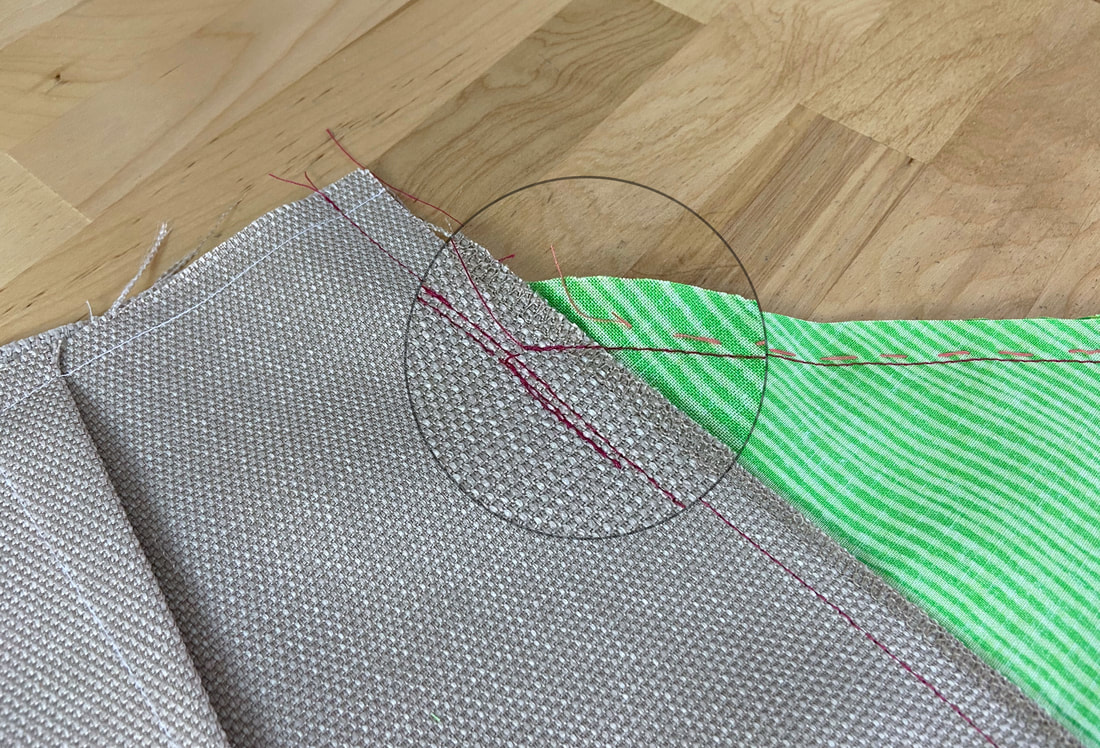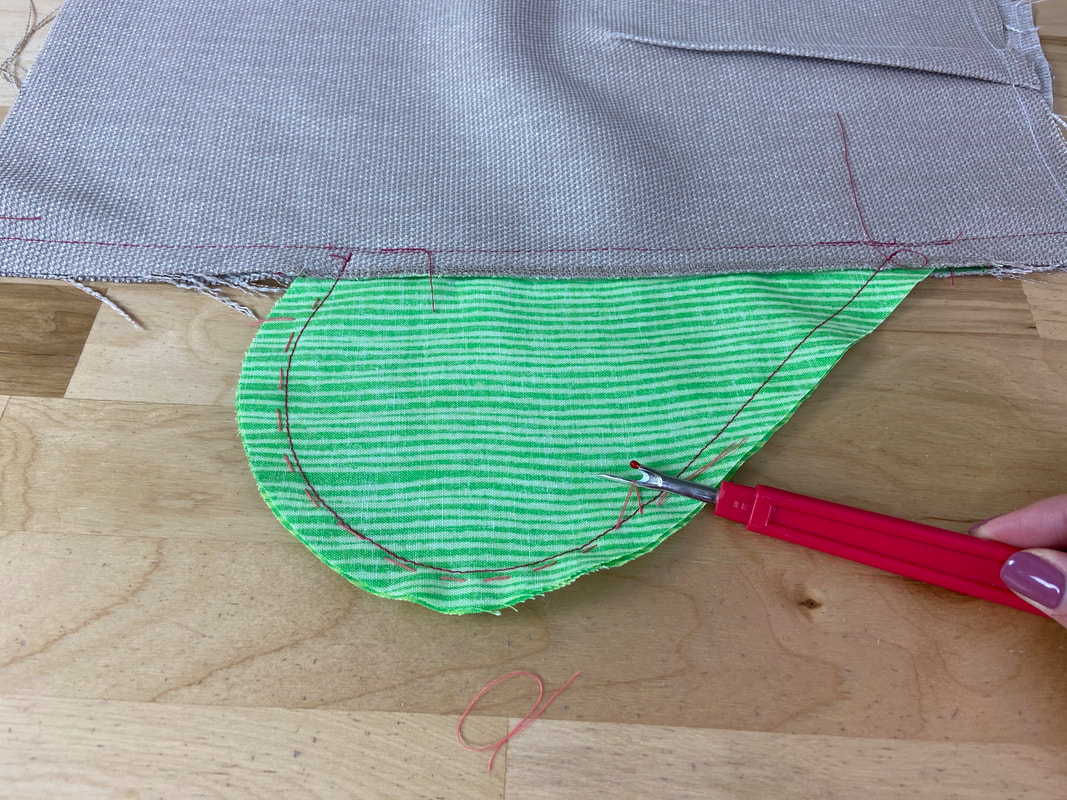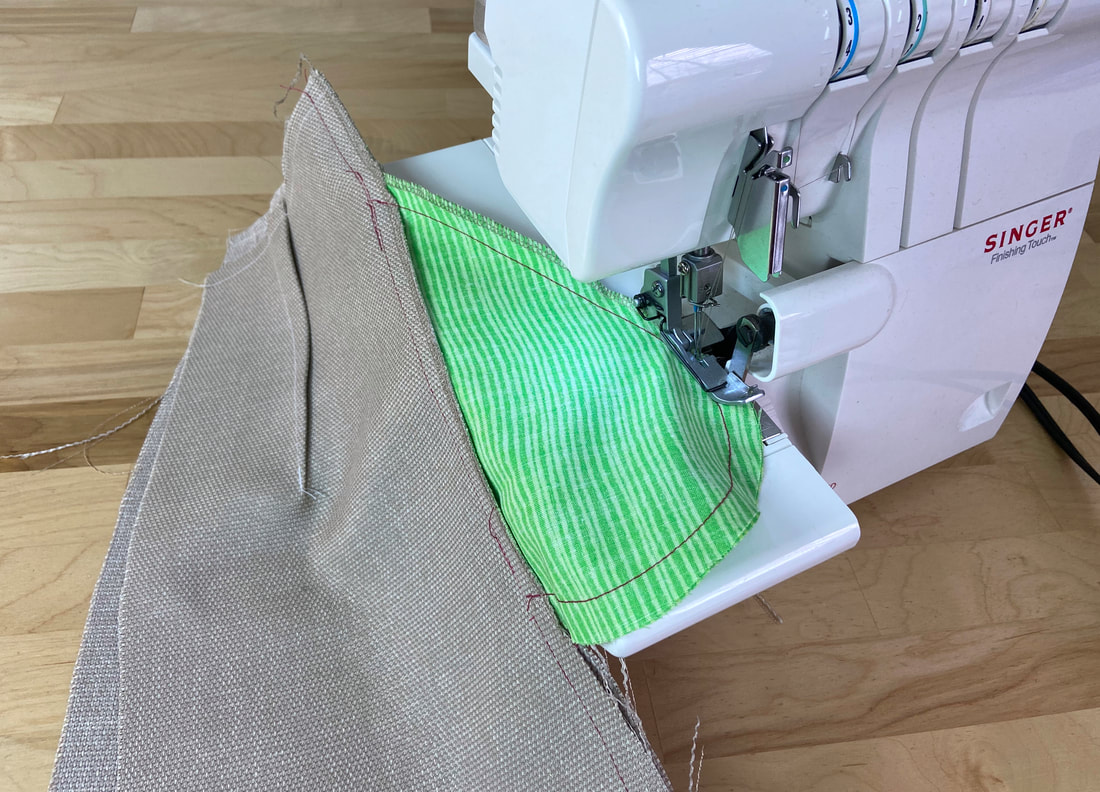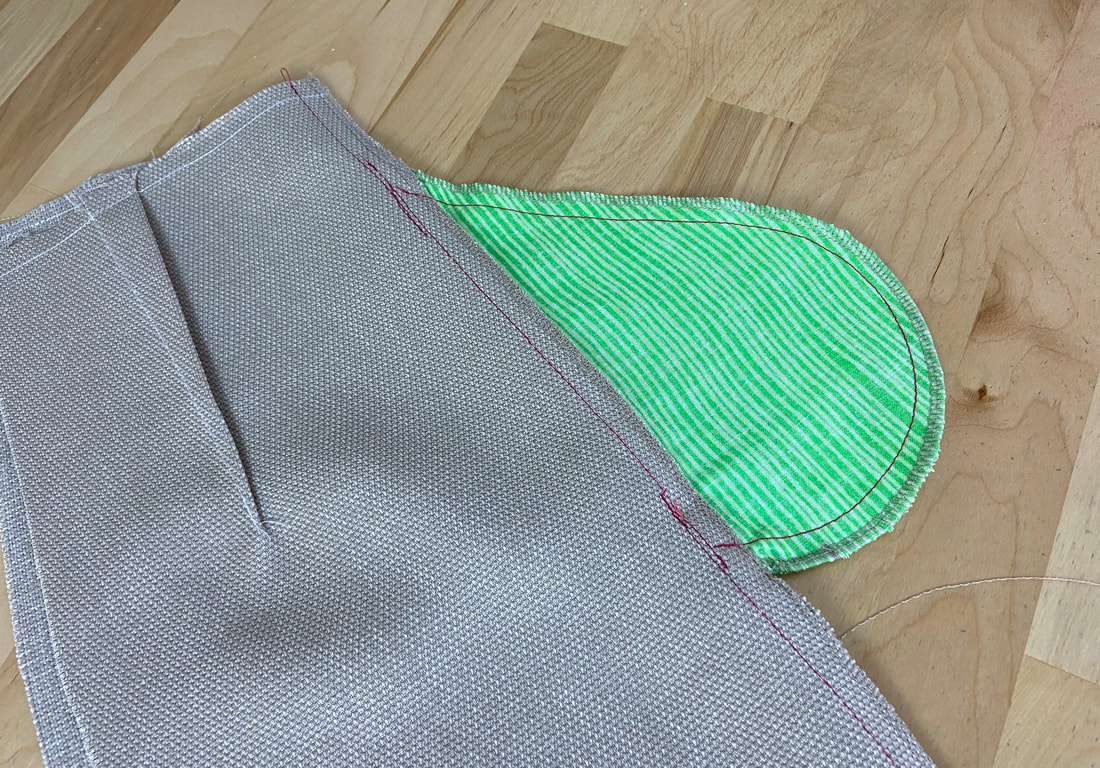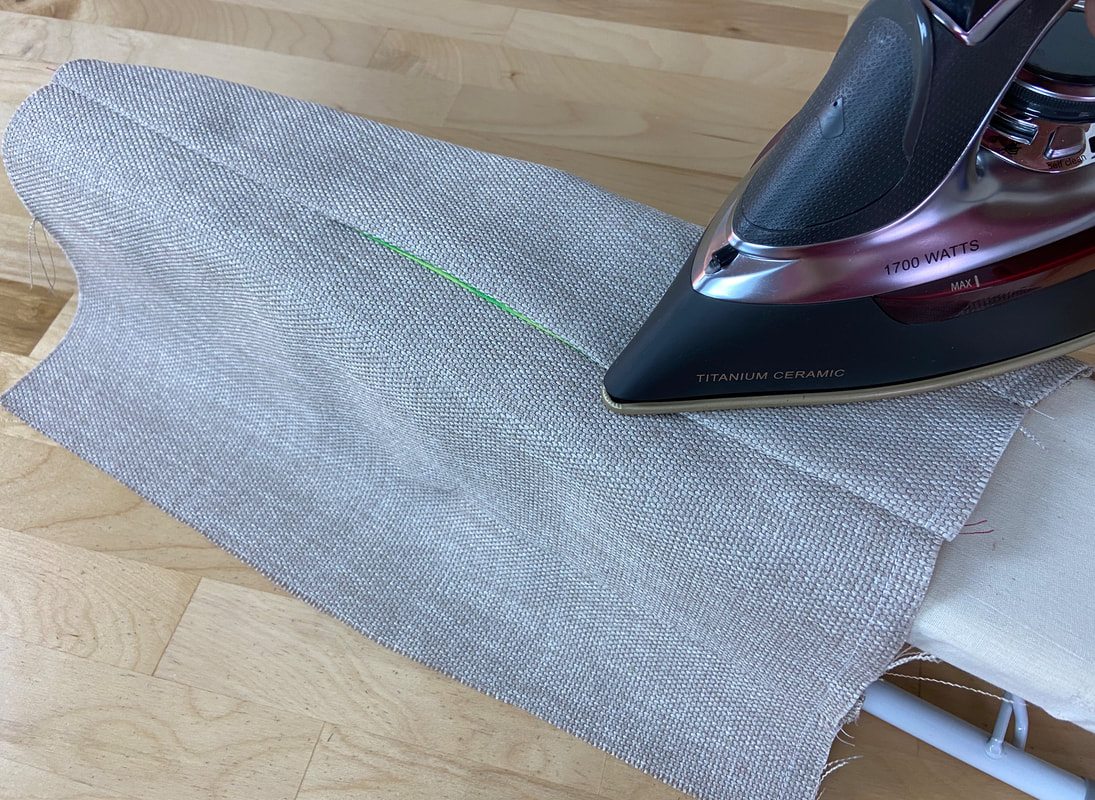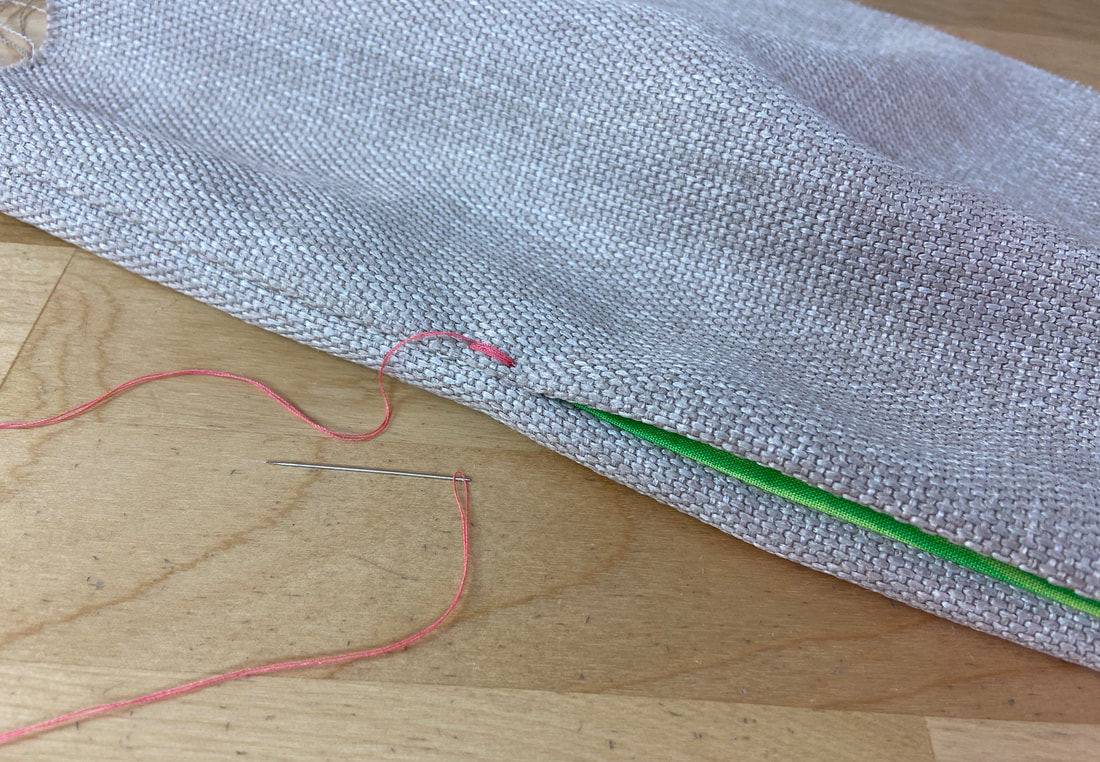Conventional on-seam pockets are cut and stitched separately into the seam. As opposed to extension on-seam pockets that are built into the garment layers and folded at the pocket opening, the separate on-seam style has seamlines along both edges of the pocket opening.
Given that these seams provide added structure and durability, a separate on-seam pocket is more commonly used in dressmaking.
The beauty of separate on-seam pockets is that they can easily be shifted to a different location along the seam, or even moved to a completely different seam. Changing pocket location can be done during the construction process or even after the garment is completed.
Pocket bags that are built into the garment layers can only be moved up and down the seam or added to a different seam during the cutting process. However, once the final pocket extension is cut, the pocket’s location becomes permanent.
Regardless of whether separate or a built-in extension, the pocket should be placed at a location that is easy and comfortable for the hand to reach and rest.
In an on-seam style, the pocket pieces that form it serve as the pocket bag. By design, on-seam pockets tend to disappear within the seamline and the pocket bag of course, in not visible from the right side of the garment.
The two separate pieces comprising an on-seam pocket are a front pocket bag layer which is stitched to the garment’s front seam edge, and a back pocket bag layer, which naturally, is stitched to the back seam edge. When the entire seam comes together during alignment, the front and back pieces overlap to form the pocket opening and respectively, the pocket bag positioned on the inside of the garment.
Some on-seam pocket styles feature a small seam extension that serves as an inbuilt facing. The separate pocket pieces are stitched to these extended facing edges to form the pocket. The facing extension hides the pocket bag fabric for a more professional finish. This is a great option for heavyweight fabrics that require a thinner lining material for the pocket bag such that it minimizes bulk in the finished garment.
A factor to consider when sewing separate on-seam pockets is that notches are unequivocally important in the seam alignment process. Not only do they mark the location of the pocket bag placement, they also mark the top and bottom of the pocket opening itself. Needless to say, notches are an essential guideline for matching and overlapping the front and back pocket layers when the entire seam is aligned and stitched.
Keep in mind that the pocket bag unit can be constructed of any shape as long as there is enough depth at the bottom to ensure maximum functionality.
Completing The On-Seam Pocket
1. Cut out the front and back pocket pieces. Make sure to transfer all notches on both pocket pieces and the corresponding garment seams.
The pocket pieces should have at least one notch at the top to mark the top of the pocket opening, and at least one at the bottom to mark the bottom of the pocket opening.
There should be some distance below the bottom notch to allow for enough pocket depth.
2. Align the front pocket piece to the front seam edge with face sides touching and notches aligning as shown. Insert pins horizontally to hold the layers together.
3. Machine stitch at the designated seam allowance- ½” in this case. Backstitch at both beginning and end of the stitch.
4. Trim the pocket seam allowance down to half its width, and enclose it with an overedge stitch as shown. You can use a zigzag stitch or a serging stitch (if you have an overlock machine).
Apply the overedge stitch to only cover the portion of the pocket length as shown.
5. Next, iron the pocket seam with the pocket piece and all seam allowance pointing away from the garment.
6. Stitch next to the seamline through the pocket layer and all seam allowance edges underneath. This is called understitching and will prevent the pocket layer from poking out at the opening.
7. Next, align the back pocket portion to the corresponding back seam edge with face sides touching and all notches matching. Insert pins perpendicular to the edge to keep the layers together.
8. Stitch following the designated seam allowance which as always, is ½” in this example.
9. Again, trim the pocket seam allowance to half its width and finish it with an overedge stitch as shown.
10. Iron the back seam with the pocket and all seam allowance pointing away from the garment. However, do not understitch the back portion as you did the front.
11. Align the front and back seam edges together such that the pocket bag edges are perfectly aligned and all notches match. Insert pins at the top and bottom of the pocket bag to keep the layers together. Insert pins perpendicular to the pocket bag edges and the rest of the seam edges at the top and bottom.
To keep everything flat and aligned in the stitching process, it helps to hand baste the pocket opening layers together.
12. Starting at the top of the seam, stitch down until you arrive at the top pocket opening notch. Leaving the needle inserted, flip the fabric layers in opposite direction and stitch over the existing stitch for about an inch. Backstitch for further reinforcement.
The pocket bag seamlines should be hidden on the inside of the garment and thus should be aligned to the right of the seam stitch applied in Step 12 above.
13. Starting at the bottom notch location, stitch down then back and over the existing stitch as shown.
Continue stitching until the bottom portion of the seam is completed.
Again, the pocket seamlines, should be located to the right of the seam stitch and enclosed on the inside of the garment.
14. Last but not least, stitch the pocket bag layers together following the seam allowance- ½” in this tutorial.
As you complete the pocket bag, stitch through the garment’s seam allowance at the top and bottom for extra reinforcement. In addition, backstitch at the beginning and end of the stitch.
Remove all temporary hand basting stitches at this point.
In this tutorial, the entire seam allowance is finished together with an overedge stitch and ironed toward the front.
15. Starting at the top of the seam, apply the overedge stitch to both seam allowance layers, continuing onto the pocket bag edges and then back down to the bottom portion of the seam.
16. Last but not least, iron the seam allowance toward the front of the garment. In this case, it is easiest to iron from the right side of the seam. Next, iron the front pocket edge flat as shown.
In some cases, you may need to iron the seam allowance open, especially if the garment is lined and the fabric is thick and bulky. You can do this by clipping the seam allowance at the top and bottom of the pocket bag but make sure to always direct the entire pocket toward the front of the garment.
For added durability, add a stabilizing tack to the top and bottom of the finished on-seam pocket opening.
Note: Contrary to the example above, use matching color thread for a more professional tack application.
Note: Contrary to the example above, use matching color thread for a more professional tack application.
Learn more about tack stitches and how to apply them, in this tutorial: Hand-Applied Tack Stitches

